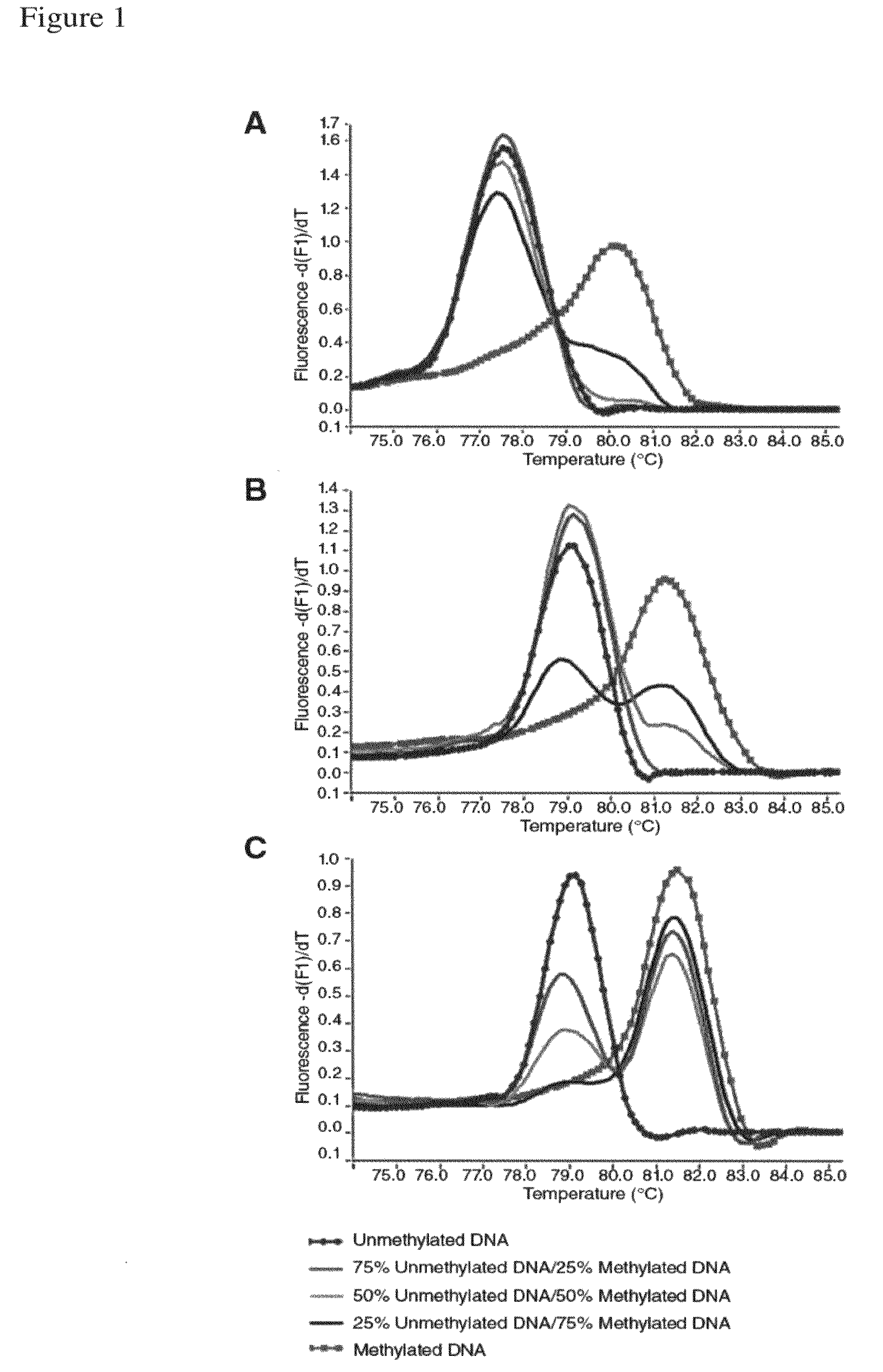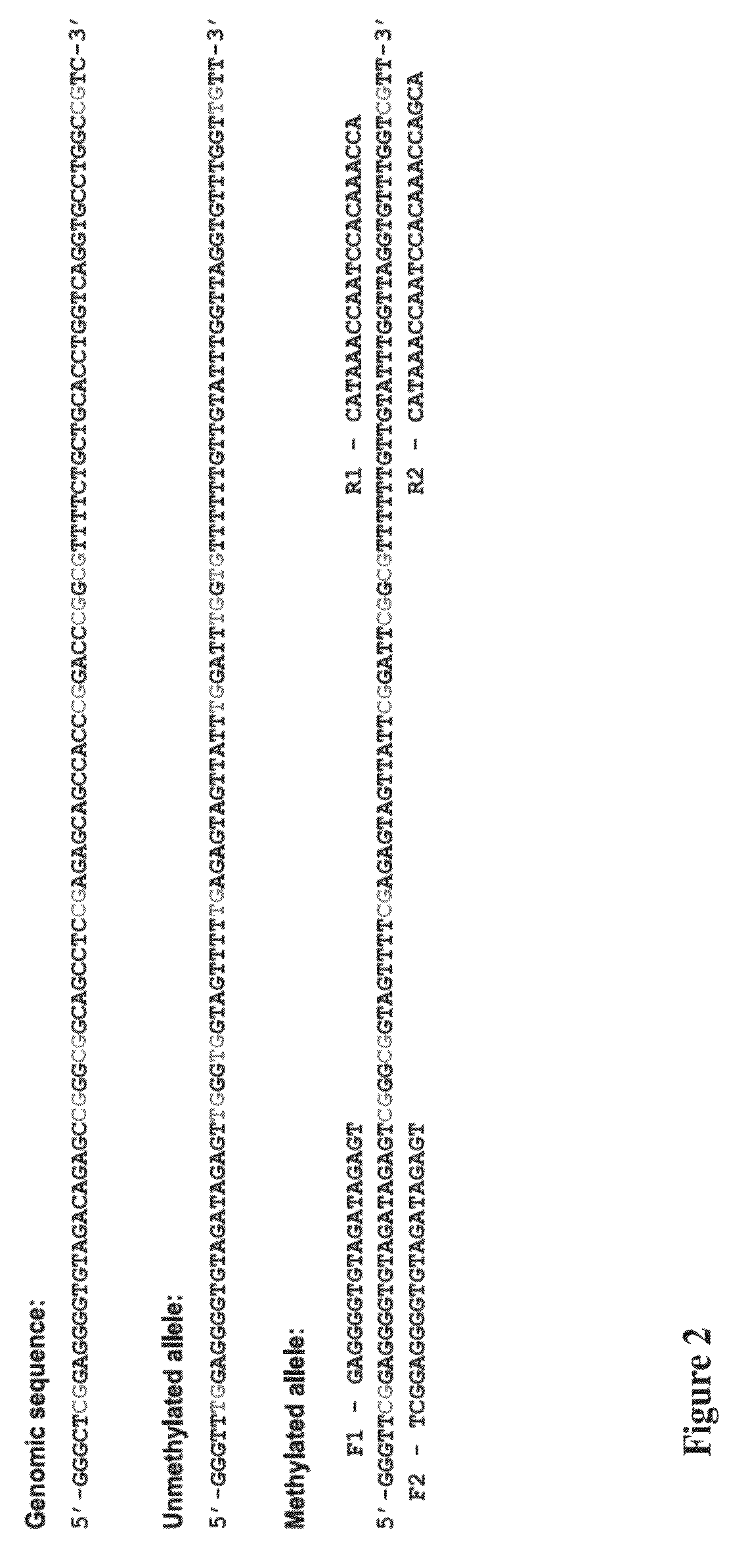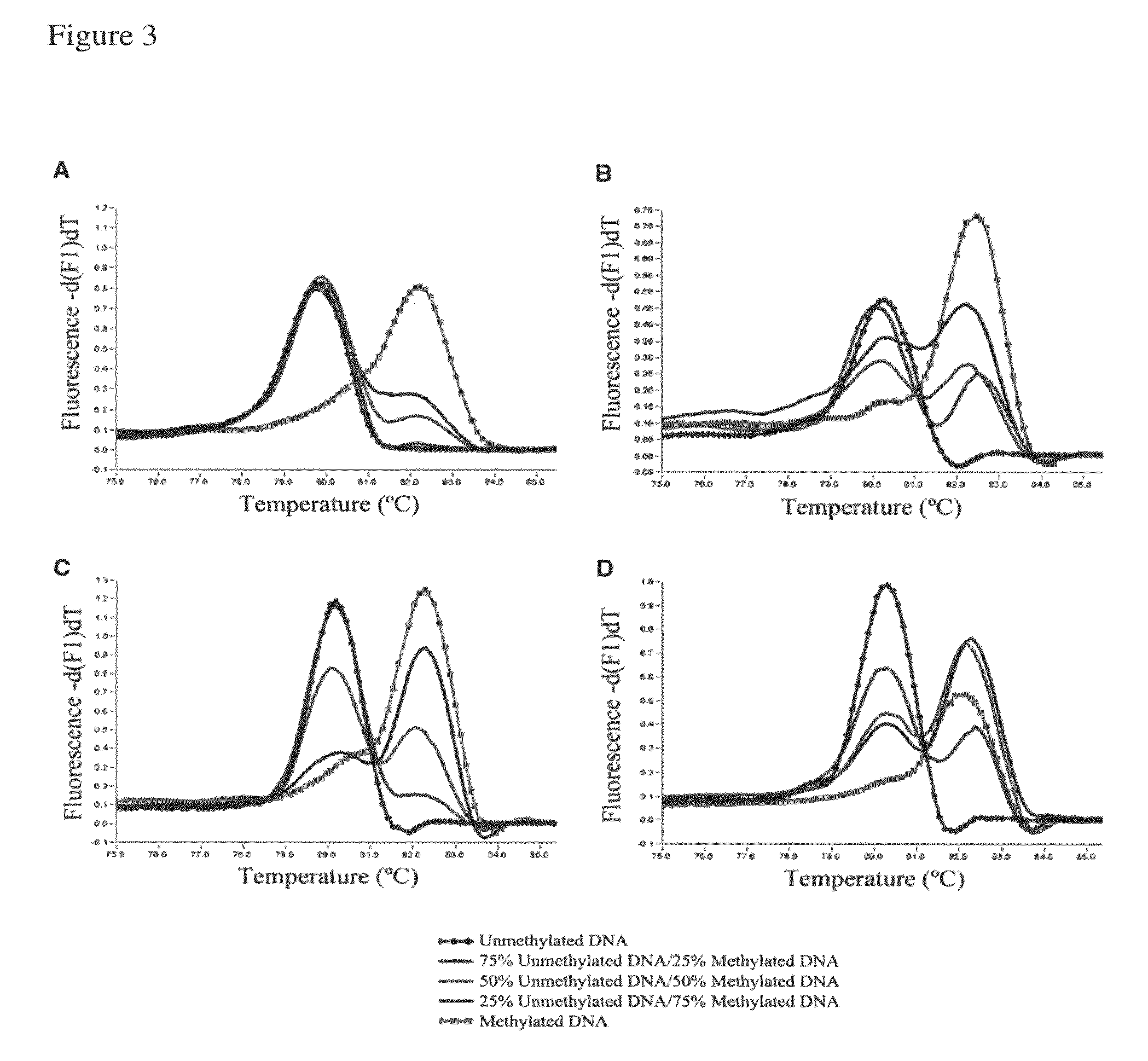Method for detecting methylation status by using methylation-independent primers
a technology of methylation status and independent primers, applied in the direction of microbiological testing/measurement, biochemistry apparatus and processes, etc., can solve the problems of reducing gene expression, time-consuming and cost-inefficient, and not immediately applicable to large-scale analysis such as screening programmes
- Summary
- Abstract
- Description
- Claims
- Application Information
AI Technical Summary
Benefits of technology
Problems solved by technology
Method used
Image
Examples
example 1
Modification of CpG Containing Nucleic Acid in Sample
[0221]For bisulfite conversion the following reagents were used: 3 M sodium bisulfite, 10 mM hydroquinone, 3 M NaOH and 0.3 M NaOH.
[0222]200 ng of sample DNA is mixed with water up to final volume 18 μL. The DNA is denatured by adding 2 μL 3 M NaOH and incubating for 10 min at 37° C. followed by 5 min at 95° C. and directly placing the mixture on ice.
[0223]208 μL freshly prepared 3 M sodium bisulfite is added (final concentration 2.6 M) and 12 μL hydroquinone solution (final concentration 0.5 mM). The mixture is mixed with pipet, and incubated for 16 h (overnight) at 55° C.
[0224]The bisulfite reaction is diluted with water up to volume of 350-400 μL and the resulting solution transferred to an assembled Microcon YM-100 centrifugal filter unit.
[0225]The solution is subjected to centrifugation at 2800 rpm using a Model 5417R centrifuge (Eppendorf, Westbury, N.Y., USA) for 10 min. The filtrate is discarded, and 250 μL water is added ...
example 2
[0230]Validation of our approach was performed using four assays previously designed according to Reference 26. The assays were developed to screen for methylation of putative tumor suppressor genes in prostate cancer samples, and two of them showed methylation in <15% of samples in our panel. The redesigned primers according to the present invention were tested using templates containing defined mixtures of methylated and unmethylated DNA in experiments analogous to those shown in FIG. 1. In all cases, the assays followed the pattern shown here for PPP3CC gene (i.e., depending on Ta, the same primer set was able to amplify the methylated allele of the gene of interest with higher efficiency; see FIG. 3). In panels A and B of FIG. 3 the promoter region of the CSMD1 gene (SEQ ID NO.:42) is amplified at annealing temperatures 61° or 68° C., respectively, by use of the primers identified by SEQ ID NO.: 144 and 145. In panels C and D a CpG rich region of the MAP3k7 gene is amplified at ...
example 3
Methylation-Sensitive High Resolution Melting (MS-HRM)
A New Approach for Sensitive and High-Throughput Assessment of Methylation
[0235]This example illustrates that high resolution melting analysis (HRM) is a sensitive and specific method for the detection of methylation. Methylated DNA and unmethylated DNA acquire different sequences after bisulphite treatment resulting in PCR products with markedly different melting profiles. We used PCR to amplify both methylated and unmethylated sequences and assessed HRM for the determination of the methylation status of the MGMT promoter region. Reconstruction experiments showed that MGMT methylation could be detected at levels as low as 0.1%. Moreover, MS-HRM allows for estimation of the methylation level by comparing the melting profiles of unknown PCR products to the melting profiles of PCR products derived from standards with a known unmethylated to methylated template ratio. Here, MS-HRM is used for the analysis of eight cell lines of know...
PUM
| Property | Measurement | Unit |
|---|---|---|
| Temperature | aaaaa | aaaaa |
| Temperature | aaaaa | aaaaa |
| Temperature | aaaaa | aaaaa |
Abstract
Description
Claims
Application Information
 Login to View More
Login to View More - R&D
- Intellectual Property
- Life Sciences
- Materials
- Tech Scout
- Unparalleled Data Quality
- Higher Quality Content
- 60% Fewer Hallucinations
Browse by: Latest US Patents, China's latest patents, Technical Efficacy Thesaurus, Application Domain, Technology Topic, Popular Technical Reports.
© 2025 PatSnap. All rights reserved.Legal|Privacy policy|Modern Slavery Act Transparency Statement|Sitemap|About US| Contact US: help@patsnap.com



